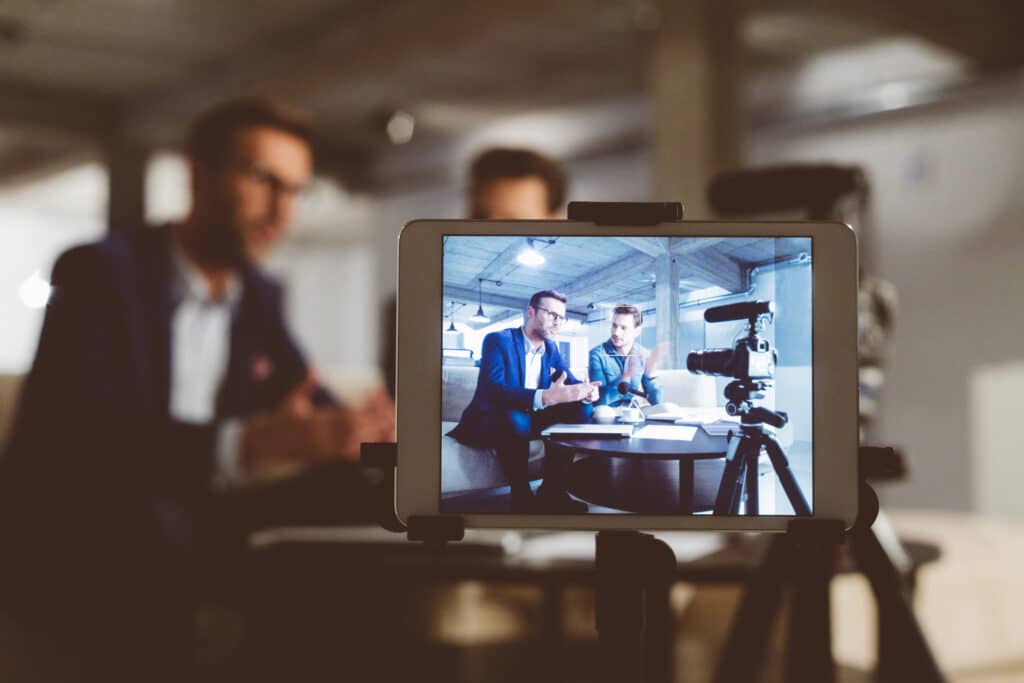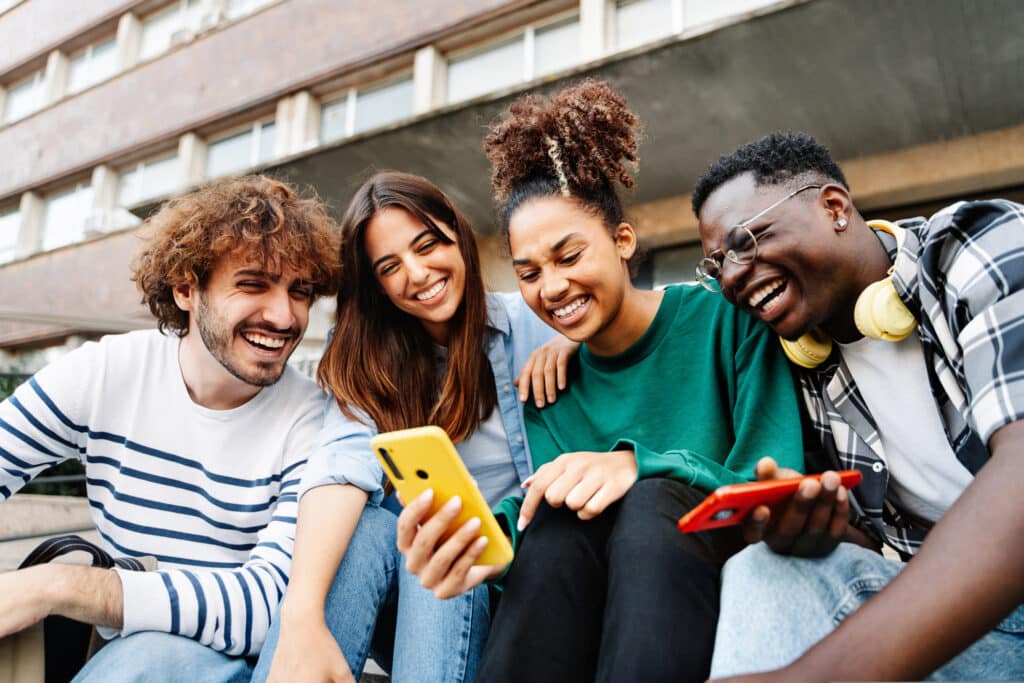How Effective is Influencer Marketing?
These days, there’s no getting away from influencer marketing – whether you view it as a force for effective advertising or just find it a bit of a nuisance. Either way, brands have been using it to powerful effect (and for longer than you might think), so for the time being, it’s very much here to stay.
And if you can’t beat them, maybe it’s time to join them? If influencer marketing – the collaboration between prominent figures and brands to promote the latter’s products or services – is something you’re intrigued by, then you’ll definitely find this article useful.
We’ll look at its history, some notable examples, how to go about using it and what the future holds for the approach below.
Quick Navigation
When did influencer marketing start?
Earlier than you might think, actually! Celebrity sponsorship and endorsements are nothing new of course: pottery company Wedgwood described their products as ‘Queen’s Ware’. The Queen in question? Queen Charlotte – who enjoyed a lengthy reign that started all the way back in 1761.
Fictional brand characters, meanwhile, are often viewed as pioneers, almost proto-influencers that encouraged people to part with their cash. We can count Homepride Fred, Uncle Ben and even jolly old Saint Nick from those iconic Coca-Cola ads in this method’s ranks.
Let’s look at the more recent past though. What comes to mind when we think of what is influencer marketing today? With the increased use of social media in the 2010s, along with the ongoing rise of reality TV and vlogging, this period saw brands increasingly work with celebrities and other visible figures to amplify their products and encourage the public to buy them.
Since then, it’s shown no signs of slowing down, despite a YouGov study showed that a whopping 96% of UK consumers saying they did not trust influencer marketing back in 2019 – put a pin in this, because consumer trust is something we’ll return to later on.

Influencer marketing channels and examples
When it comes to influencer marketing examples, what can we point to as its successes, despite the negative view of the practice? Let’s take a look at how it’s been used in the past across some of the most popular social channels going.
Why it’s so useful
Big on visuals and highly scrollable, influencers and brands can make use of powerfully creative content that encourages followers to purchase – the channel has reported nearly 130m users tapping on shoppable posts each month. Brands can also use Instagram stories to increase visibility. Over the course of 24 hours, they can highlight themselves or an influencer in the long term and engage audiences through the likes of polls, sharing and tags.
How has it been used?
Ice cream icons Häagen-Dazs used Instagram in partnership with local influencers from across New York City to capitalise on ice cream as a summertime food, as well as the brand’s ‘buy one get one free’ offer by hosting sampling events at specific New York-based stores.
Meanwhile, influencer Kendall Kremer hosted a rooftop summer ice cream sundae party, while Katelyn Calautti shared a sponsored blog on how to host a summer party with Häagen-Dazs products.
The results
The social coverage of both, along with the sampling events, saw the brand generate 14.3 million impressions and 27,400 engagements – 400% above the average engagement rate.
YouTube
Why it’s so useful
YouTube lets brands, influencers and content creators use highly engaging videos to truly highlight the best of what a product has to offer. And with 1.86 billion users across the globe, there’s real potential to reach a lot of people.
What’s more, since the content stays there indefinitely, its ability to remain evergreen shouldn’t be ignored. And with a link to the product or service in any given video’s description, it’s a great way to increase conversions.
How has it been used?
Virtual private network, NordVPN, has used YouTube to great effect, working with some of the biggest YouTubers and content creators across the entertainment, tech, and gaming spheres to increase their presence – by featuring in these creators’ videos, and including a ‘limited time offer’ link in the videos’ descriptions.
The results
By sponsoring 598 videos, NordVPN received 5.7m likes, 91.5m views and a reach of 2.2b.
TikTok
Why it’s so useful
Using short video content combined with big and bold audio, brevity is the name of TikTok’s game, a model that’s proved a hit with almost 21% of the world’s 4.8 billion internet users. Boasting some of the highest engagement across any social channel, it’s made for a highly effective platform for brands to sell their products through – especially when it comes to targeting Gen Z.
How has it been useful?
Gymwear brand Gymshark partnered with a range of influencers for their ‘66 Days: Change Your Life’ challenge, a campaign that asked their audience to challenge themselves for 66 days through positive, active habits for a year’s supply of Gymshark.
The results
By using #Gymshark66 across its TikTok video content, the brand amassed 252.6m views on the platform.
Why it’s so useful
With 3 billion monthly active users, powerful reach through both Facebook Ads and influencers’ organic promotion, Facebook still has its place, even in the face of more modern social channels. And with it being the platform of choice for older age groups, brands can create content for those with higher incomes in mind.
How has it been useful?
National Geographic and Microsoft teamed up to launch its ‘Make What’s Next’ campaign across a range of channels, including Facebook, to drum up interest in Science, Technology, Engineering and Maths for girls.
Going live on that year’s International Women’s Day, the campaign focused on National Geographic’s women explorers and photographers by combining Facebook LIVE activity, posts across four of Nat Geo’s Facebook channels and more.
The results
The campaign garnered over 150m social and digital impressions on National Geographic distribution channels, 4m social engagements and 6.4m video views.

How to use influencer marketing
As the above hints at, influencer marketing can come in all sorts of different shapes and forms. So, let’s take a look at the options that are available to you.
- Sponsored content
The archetypal influencer post: a paid post that’s usually a photo, video or blog that features your product or service. The influencer receives a link to your store or promo code to include in the content, and they should include #ad or #sponsored so your audience is aware the influencer has disclosed when they’re promoting sponsored content.
- Affiliate links or discount codes
Here, brands create a unique link or discount code for influencers to share with their followers, using their baked-in audience to raise your profile and drive sales to your site or stores. Typically, the influencer will be sent a sample of the product to create the content with based on their experience with said product.
- Contests and giveaways
Influencers offer a prize (usually a free product or sample) to get a buzz going around your brand, foster excitement in potential customers and create new buyers.
The contest will feature clear instructions, winner selection criteria and minimal steps to follow so you can maximise engagement – liking, sharing, or commenting on the post, tagging friends, following your brand’s social media channel, subscribing to a newsletter, or even simply registering an account with your eCommerce store are common entry points.
- Promoting influencer-created content
Maybe the most mutually beneficial type of influencer marketing, promoting content that an influencer has created helps to market their brand – all while you reap the benefits of having their audience come to you.
Of course, you should aim to collaborate with influencers who have a highly engaged audience so you can maximise exposure. And if you’re working with a few different influencers, they run their respective content at different times, so they aren’t having to share the attention.
- Brand ambassadors
If it’s something more long-term you’re looking for, then brand ambassadors can boost credibility, trust, and awareness long into the future. Whether it’s for a few months or a few years, it’s a great chance for your respective audiences to familiarise themselves with your brand. Additionally, it can increase sales and traffic, improve campaign momentum, and has the potential to maximise your ROI.
The brand ambassador option is also great for small businesses that don’t quite have the clout to work with celebrity influencers. Try encouraging employees or existing customers to become brand ambassadors who you can rely on to share your content and increase brand awareness. It’s an approach that can pay off nicely when it’s done properly.

How effective is influencer marketing?
We’ve touched on how powerful influencer marketing can be earlier, but let’s take a closer look here. Through the lens of ROI, is influencer marketing truly worth it? Here’s what others have found.
- As a means of creating new customers, influencer marketing is one of the main reasons brands use it. Thankfully, 51% of marketers say the method has helped them gain higher-quality customers in the form of recurring buys and brand advocacy.
- Compared to paid advertising in the form of banner ads, a study from Convince and Convert found that influencer marketing actually got 11x the ROI than banner ads did.
- A report by HypeAuditor found that on average, brands can get $4.21 for every $1 they spend with an influencer on Instagram. Spending $500 on a post with an influencer’s involvement? That’s $2,105 you’ll get in return – not bad at all!
- As for which platform yields the biggest ROI, that would be Instagram. A HubSpot survey found that 30% of marketers said they get most ROI from the channel, with a further 32% saying it’s also the easiest platform to work with influencers on.
On the topic of consumer trust, the role it has to play in influencer marketing is a big one. Earlier, we noted that a whopping 96% of consumers did not trust influencer marketing. But that was some time ago, and the world has changed a lot since then. The pandemic affected influencer marketing greatly, with COVID increasing its uptake by brands all over the world. Clearly, the perception of it has changed in a big way.
Another HubSpot study found that 50% of Millennials trust product recommendations from influencers, with 33% of Gen Z saying they’ve bought a product based on an influencer’s recommendation. Clearly, influencers have real sway – but that trust doesn’t necessarily come easily.
Trust has to be earned however, and to do that, influencers must be honest and transparent about how they’re working with brands in return for payment. Even the slightest bit of dishonesty can result in a loss of trust. Both parties have to be aware of the fine line they’re treading when working together.
The future of influencer marketing
With social media going nowhere, it’s only logical that influencer marketing is likely to follow suit too. And as it’s a huge part in many brands’ marketing strategies, it seems as though it’s only set to grow. But how? Here’s what we reckon the future has in store for influencer marketing…
- More and more micro-influencers: Experts in specialised, niche subjects with smaller audiences (~100-1,000), micro-influencers have the ability to connect with highly specific groups on a more personal level by creating content that really resonates with their followers. And since they’re more affordable than celebrities, it’s not unthinkable that we’ll see their use increase in the future.
- Increased video content: Platforms like YouTube, Instagram and TikTok give brands and influencers the chance to show off their personality, build stronger connections through immersive content, and then have this content shared across the web. They’re a hit with audiences, and we can’t see their use slowing down anytime soon.
- More transparency: Consumers aren’t stupid. They can see through dishonesty, and brands that fail to be transparent in their actions run the risk of losing market share. As a result, we believe we’ll see more emphasis placed on authentic, relatable, and real content that will help brands build stronger, more meaningful relationships.
- The rise of virtual influencers: Computer-generated influencers, designed to look and behave like the real thing, are a more recent thing. But they offer a number of advantages that suggest they’ll be increasingly used in the future. Since they’re entirely controllable by their creators, they can promote products and services in a far more targeted way.
Their use can be more logical than a real-life influencer. For instance, it might make a lot more sense for a virtual influencer to promote a video game or some software over their human equivalents. Crucially, they can also be designed and animated in ways that serve the brand – which creates more opportunities for the types of content created by brands.
Need help building your own brand? From content to creative, social media to branding, the experts at BANC can shape the way you want to look, speak, and interact with your customers. Head to the homepage or get in touch with us at 0345 459 0558.



